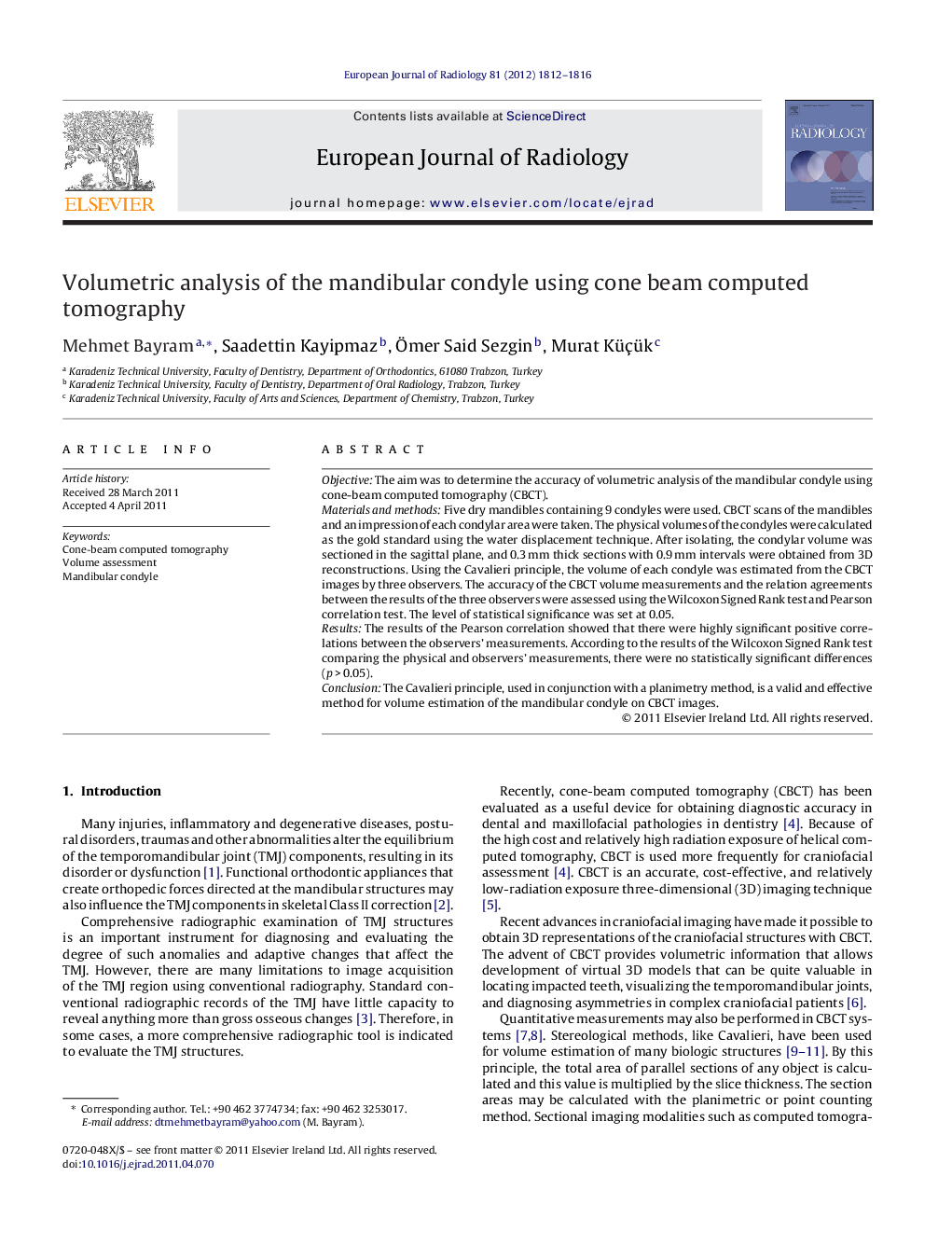| Article ID | Journal | Published Year | Pages | File Type |
|---|---|---|---|---|
| 4226104 | European Journal of Radiology | 2012 | 5 Pages |
ObjectiveThe aim was to determine the accuracy of volumetric analysis of the mandibular condyle using cone-beam computed tomography (CBCT).Materials and methodsFive dry mandibles containing 9 condyles were used. CBCT scans of the mandibles and an impression of each condylar area were taken. The physical volumes of the condyles were calculated as the gold standard using the water displacement technique. After isolating, the condylar volume was sectioned in the sagittal plane, and 0.3 mm thick sections with 0.9 mm intervals were obtained from 3D reconstructions. Using the Cavalieri principle, the volume of each condyle was estimated from the CBCT images by three observers. The accuracy of the CBCT volume measurements and the relation agreements between the results of the three observers were assessed using the Wilcoxon Signed Rank test and Pearson correlation test. The level of statistical significance was set at 0.05.ResultsThe results of the Pearson correlation showed that there were highly significant positive correlations between the observers’ measurements. According to the results of the Wilcoxon Signed Rank test comparing the physical and observers’ measurements, there were no statistically significant differences (p > 0.05).ConclusionThe Cavalieri principle, used in conjunction with a planimetry method, is a valid and effective method for volume estimation of the mandibular condyle on CBCT images.
